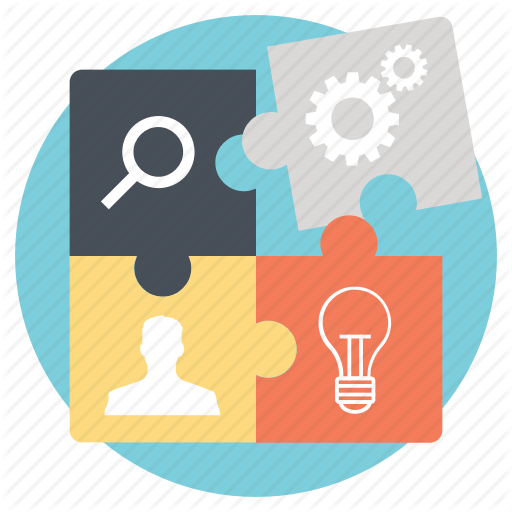Digital Twins are digital models that virtually represent their physical counterparts. This virtual representation of a physical product, an operational process, or a task is used to understand or predict the physical counterpart by leveraging both the business system data that defines it and its physical world experience captured through sensors.
Growing demand for Digital Twin technology is an outcome of increasing digitization of product development, production and products.
This course provides hands on working experience in building Digital Twins using AI/ML and Data Analytics components.

- Design and Develop Digital Twin solutions for Mechatronics Systems
- Build Models and Predictive Analytics for system performance analysis using three dimensional virtual models (PHYSICS + MATHEMATICAL + DATA SCIENCE).

On successfully completing this program you will:
- Have working experience to design and develop Digital Twin integrating Virtual and Physical components and systems
- Go through end to end process of Data Curation, Data Quality, Data Governance, Data Analysis, Data Modeling and Prediction
- Prototype and Test a Digital Twin solution to a defined requirements with Virtual and Physical systems
- Ability to apply mathematics and science in engineering applications
- Ability to design a component or a product applying all the relevant standards and with realistic constraints
- Ability to design and conduct experiments, as well as to analyse and interpret data, and synthesis of information
- Ability to use techniques, skills, resources and modern engineering and IT tools necessary for engineering practice
- Problem solving ability
- Having adaptive thinking and adaptability in relation to environmental context and sustainable development

Digital Twin course will be covered through a comprehensive, unique platform with more hands on practical trainings. Following are the high level topics will be covered as part of Digital Twin course. The Digital Twin course is built with an industry standard Mechatronics systems consists of Mechanical components, Electromechanical systems, sensors, PLC based Control System (Programmable Logic Controller), Edge Gateway, IoT systems, Modeling, Simulation and Web Application software
- What is / Basics / History of Digital Twin
- Class room trainings - Multiple Components of Digital Twin
-
- Virtual Modeling of a Mechatronic System
- Simulation of a Mechatronic Systems
- Mechatronics Systems – Sensors, PLC, Controls and Data Acquisition systems
- Data management - Data Connectivity, Data Collection, Data Ingestion, Data Modeling, Data Governance and Data Quality
- AI based prediction algorithms
- Design and Development of web applications
- Practical Sessions in state of the art lab with latest digital tools and technologies
-
- Building Virtual Model of a Twin - Mathematical Model of Mechatronics Systems
- Simulation and analysis of Mechatronics systems
- Assembly of Physical System – Industry standard Mechatronics Systems
- Integration of Virtual Model and Real world Physical Systems
- Sensor Integration, PLC Programming, Edge Gateway Software development, IoT Platform integration & IoT Applications
- Data Analysis, Data Modeling and Prediction/Forecasting

3 calendar months
- Instructor lead class room Sessions – Approx. 200 Hours
- Practical sessions, Labs exercises – Approx. 200 Hours
- Assignment, Project Work and Assessment on real world industry problems – Approx. 120 Hours

After successful completion of course, learners will be able to apply for roles in IT/ITeS/Product/Core companies
- Software Developer
- IOT Application Developer
- IOT Architect
- Data Engineer
- Data Modeler
- Data Architect
- Data Scientist
- Data Analyst
- Solution Architect
- System Engineer
- etc.
Cyber-physical systems (CPS) is a new frontier of engineered systems that are built from, and depend upon, the seamless integration of computational algorithms and physical components.
CPS are emerging as an area of engineering with significant economic and societal implications. Major industrial sectors increasingly need a workforce capable of designing and engineering products and services that intimately combine cyber elements (computing hardware and software) and physical components and manage their interactions and impact on the physical environment.
A major theme of the course is on the interplay of practical design with formal models of systems, including both software components and physical dynamics. A major emphasis will be on building high confidence systems with real-time and concurrent behaviors for hands-on laboratory work and project-based learning.

- Design and Develop a CYBER PHYSICAL SYSTEMS solutions for an Industry standard Mechatronics Systems using Sensors, Devices, Gateway, PLCs, IoT Applications and IoT Platforms

On successfully completing this program you will:
- Have working experience to design and develop CYBER PHYSICAL SYSTEMS
- Prototype and Test a CYBER PHYSICAL SYSTEMS solution to a defined requirements with Physical systems in a lab environment
- Ability to design and conduct experiments, as well as to analyse and interpret data, and synthesis of information
- Ability to use techniques, skills, resources and modern engineering and IT tools necessary for engineering practice
- Problem solving ability
- Having adaptive thinking and adaptability in relation to environmental context and sustainable development

CYBER PHYSICAL SYSTEMS course is built around Mechatronics systems that include Mechanical components, Electromechanical systems, sensors, PLC based Control System (Programmable Logic Controller), Edge Gateway, IoT systems and Web application software.
What is / Basics / History of CYBER PHYSICAL SYSTEMS
- What is / Basics / History of Digital Twin
- Class room trainings - Multiple Components of CYBER PHYSICAL SYSTEMS
-
- Mechatronics Systems – Sensors, PLC, Controls and Data Acquisition systems
- Data management - Data Connectivity, Data Collection, Data Ingestion, Data Governance and Data Quality
- IoT Application – Design, development and deployment in cloud
- Cloud Infra – Application deployment in cloud, cloud management
- Design and Development of web applications / UI applications
- Practical Sessions in state of the art lab with latest digital tools and technologies
-
- Assembly of Physical System – Industry standard Mechatronics Systems
- Sensor Integration, PLC Programming, Edge Gateway Software development, IoT Platform integration & IoT Applications

3 calendar months
- Instructor lead class room Sessions – Approx. 200 Hours
- Practical sessions, Labs exercises – Approx. 200 Hours
- Assignment, Project Work and Assessment on real world industry problems – Approx. 120 Hours

After successful completion of course, learners will be ready to apply for roles in IT/ITeS/Product/Core companies
- Software Developer
- IOT Application Developer
- IOT Architect
- Solution Architect
- Data Engineer
- System Engineer
- Cloud Architect
- etc.
Mindset for Skill up to Step up (M4s2s), is a skill up journey to cultivate a mindset for catalytic learning and translate set goals to productive results. The course is focused on expanding current capabilities of participants to gain deeper insights into digital technologies and help transform as digital leaders.
Step Up to the next rung on the career ladder with Skill Up. Whether you’re looking to step up in the current role or looking for higher responsibilities in a new role, there is always one “Up”.

Technology-based innovation within an established organization or as the foundation for a new business startup affects individuals, enterprises and society in unusual and complex ways over time. We deemed it important to build a deeper understanding of the management of innovation in existing organizations of all sizes, as well as of entrepreneurship with learnings in Design and Technology management.
Brought as capsule learning modules, Design and Technology management program prepares the learners, to develop the science, technical, and business skills required for management of people, process and systems to create value and win competitive battles.

Technology management is an emerging field of study dealing with the design, development, operation and use of technological products and services to help increase efficiency and deliver value to organizations and thereby to customers.
Technology has far reaching effects on the strategic importance to teams, organizations and communities. There are increasing number of alternative paradigms and sourcing choices in developing technologies and greater work implications and assimilation challenges in deploying technologies. Knowledge about these for effective development, deployment and management of technologies is the objective of this program.
Technology management program prepares individuals to leverage technological advances to create competitive advantage with effective development, deployment and management of technologies.
Impacts of technological innovation
- How technology has disrupted industries
- Explore competitive dynamics of industries
- Decision-making that ultimately impacts revenue growth
How technology transforms cost structures of firms
- Explore business models in the high-tech industry
- Build capabilities that significantly increase value chain efficiency

Design management encompasses the ongoing processes, business decisions, and strategies that enable innovation and create effectively-designed products, services, communications, environments, and brands that enhance quality of life and provide organizational success.
Design-driven innovation processes are based on a profound understanding of customers’ or users’ needs, wants and aspirations – found in the human-centered Design thinking methodology. This approach not only supports the development of successful new products and services, but also develops innovative thinking, drive inspirational leadership and support change in an age of digital transformation and complex problems.
The program focusses on Integrative thinking, experiential learning, and team working to intercept the deep needs of users and apply creative methods in the development of precise design identities and brand strategies.
Areas of Design Management
- Product design. The manager here will be looking at managing all functions related to product development and release and securing relationships with other business units to facilitate this. A user-centered (or UX centered) approach is commonly the guiding force for this work
- Engineering design. Engineering design is more concerned with technological outputs than other disciplines of design – be it a technological process (such as manufacturing) or technological artifacts (such as a system)
- Service design. The flip side to product design and something that is becoming increasingly importance with the rise of the product-service hybrid. Service design takes a customer experience (CV) or customer-centered approach
- Brand design. Responsibilities here are for brand experience, developing touch points, and creating reliable, trustworthy perspectives that are strongly recognizable to clients.
- Business design. Business design is an emerging concept – it’s the understanding that businesses can be designed from within to operate more efficiently and at higher levels of effectiveness. Typically, a business design manager will need to be very effective at persuading others of the utility of their designs.